If you would like to enjoy Japanese sweet potatoes with a sweet yet tangy twist, this dish is perfect for you. Satsumaimo no Lemon-ni allows you to savor sweet potatoes complemented by the refreshing tartness of lemon.
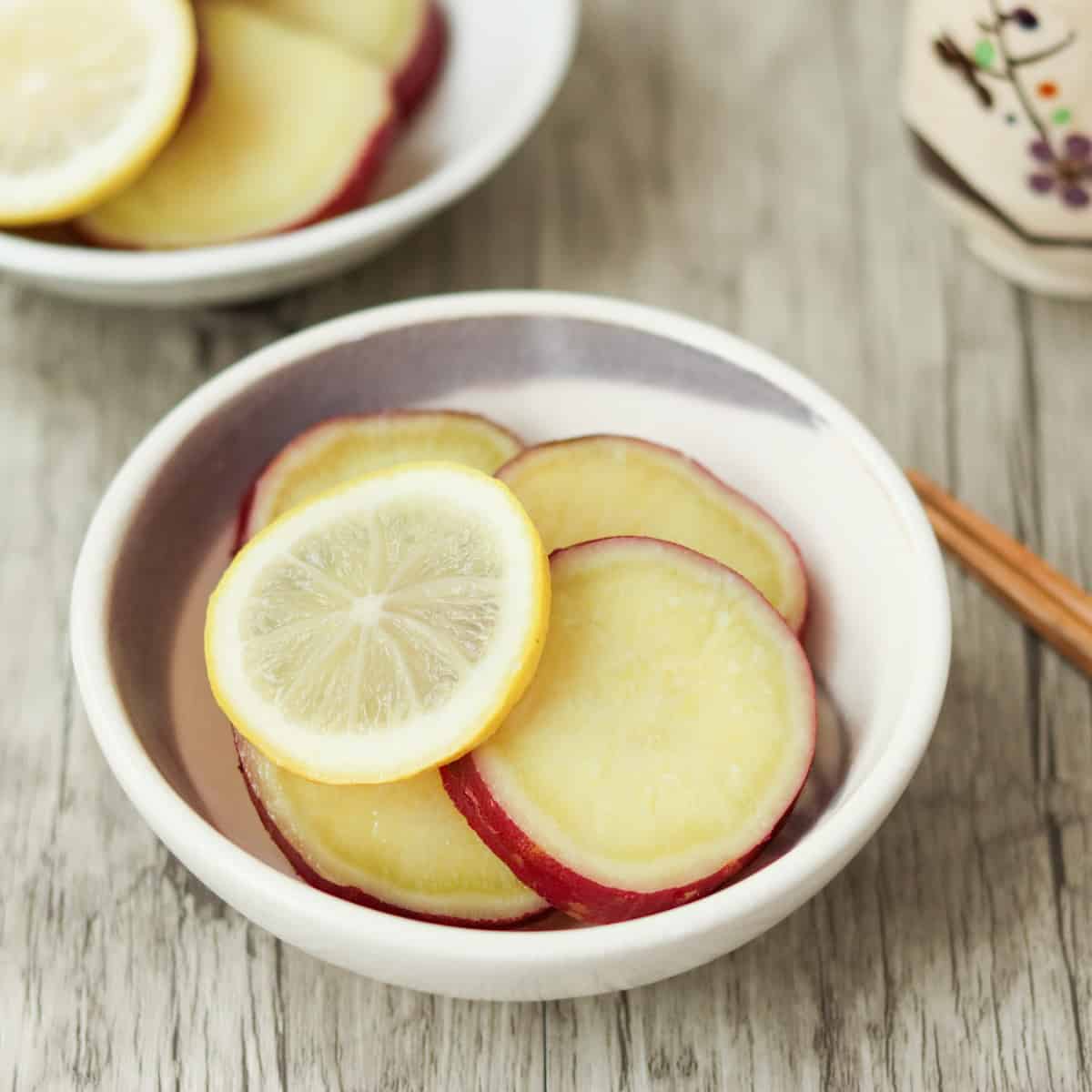
Jump to:
What is Satsumaimo no Lemon-ni?
Satsumaimo no Lemon-ni is a Japanese sweet dish made by simmering Japanese sweet potatoes in sweetened water with lemon slices. "Satsumaimo" means Japanese sweet potatoes, "no" indicates possession (connecting the preceding and following words), and "Lemon-ni" refers to simmering with lemon slices. In Japan, there is a culinary tradition of simmering ingredients with sweet flavors, and this dish is a popular side dish often enjoyed in the fall and winter, when sweet potatoes are in season.
There is also a traditional dish in Japan known as Satsumaimo no Amani, which involves simmering sweet potatoes in a sweet syrup. Satsumaimo no Lemon-ni is a variation of that dish, with the addition of lemon for a unique twist of flavor. The lemon not only adds a refreshing tanginess to the dish but also balances the natural sweetness of the sweet potatoes, creating a harmonious contrast. Both are fall and winter staples in Japan that feature sweet potatoes, so be sure to give them a try.
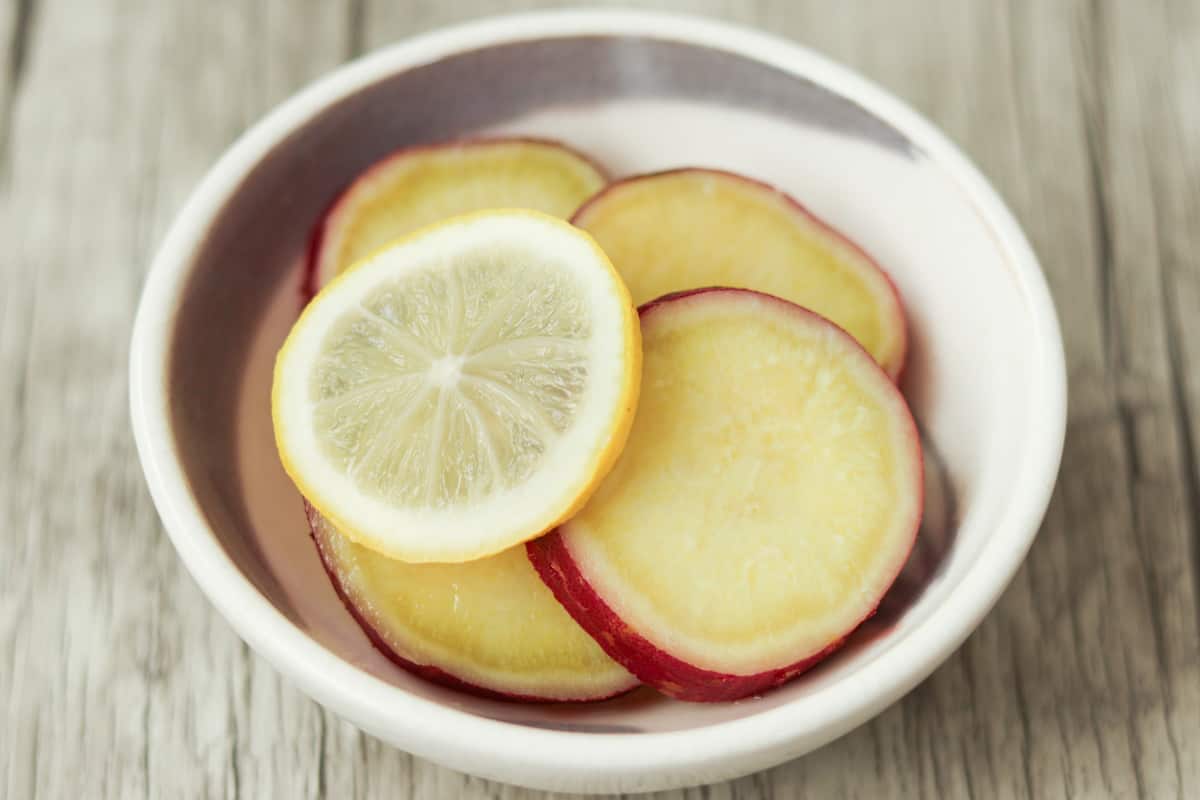
Choosing the right sweet potato for the dish
There are various types of Japanese sweet potatoes, and their sweetness depends on the variety. For this reason, some of you might wonder which variety is best for this dish—but there is no need to worry. In fact, you can use any type of Japanese sweet potato.
The goal of this dish is not so much to highlight the natural sweetness of the sweet potato as to enhance it with seasoning while retaining its flavor. So, feel free to try it with any variety of Japanese sweet potato available.
Substitutes for lemon
To make this dish, you will need lemons. That said, if you don't have fresh lemons on hand, you can substitute bottled lemon juice. In that case, use 1 tablespoon of lemon juice, which is roughly equivalent to the juice from half a lemon.
Additionally, you can use other citrus fruits such as limes, sudachi, or kabosu. While it won’t technically be “lemon-ni” anymore, it still makes a delicious variation.
Simple guide to otoshi-buta (drop lid)
In Japan, when making this sweet dish—or really, simmered dishes in general—it is common to use an otoshi-buta (drop lid).
An otoshi-buta is a lid that sits directly on top of the ingredients in a pot or pan. Placing the lid directly on the ingredients allows the cooking liquid underneath to circulate more evenly, resulting in more efficient simmering with less liquid.
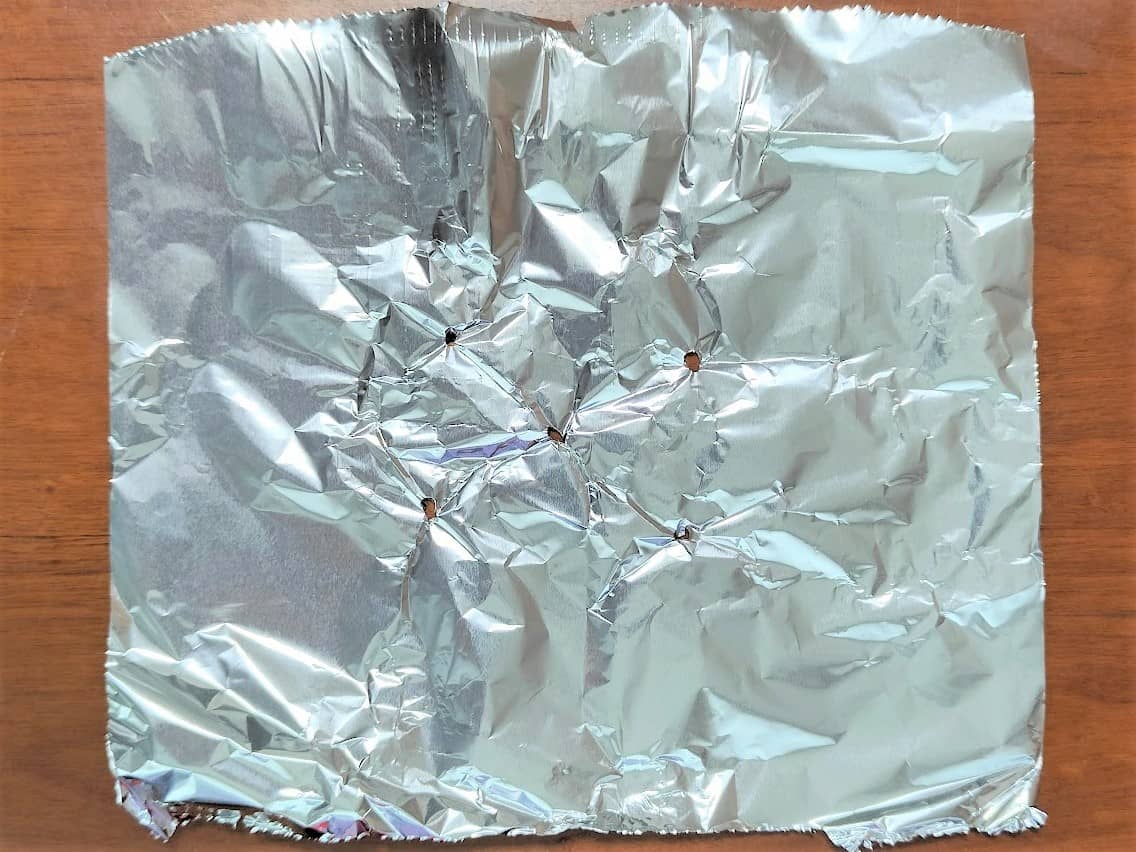
Commercial versions are available, but you can easily make one yourself by simply poking a large hole or several small ones in a sheet of aluminum foil—as shown in the photo above. The holes help prevent the otoshi-buta from floating up due to steam pressure. You can use a regular lid instead, but since it is so easy to make, I recommend giving it a try.
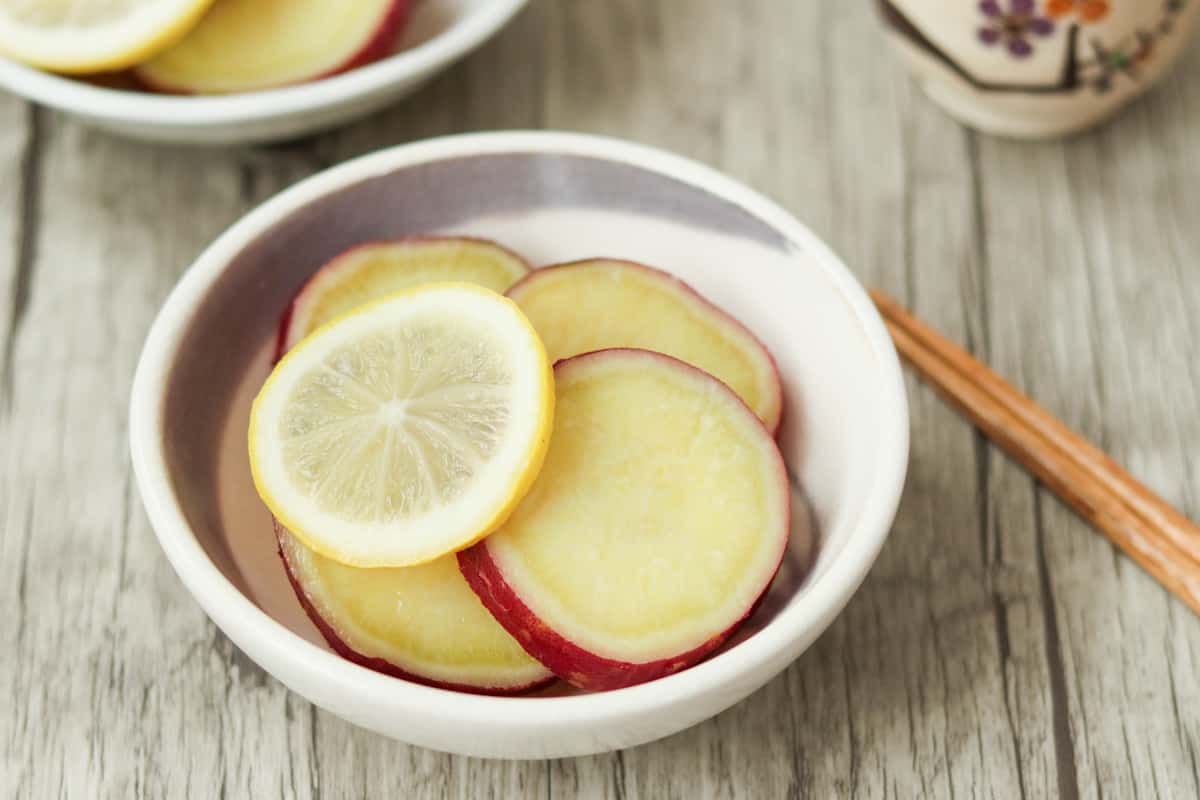
📋Step-by-step recipe
Equipment
- otoshi-buta (drop-lid) (You can easily make one by following the instructions above. If that seems like too much trouble, you can simply use a regular lid instead.)
Ingredients
- 1 Japanese sweet potato (satsumaimo)
- ½ lemon
- 1 cup water
- 2 Tbsp sugar
Instructions
🕒 Total: 50 mins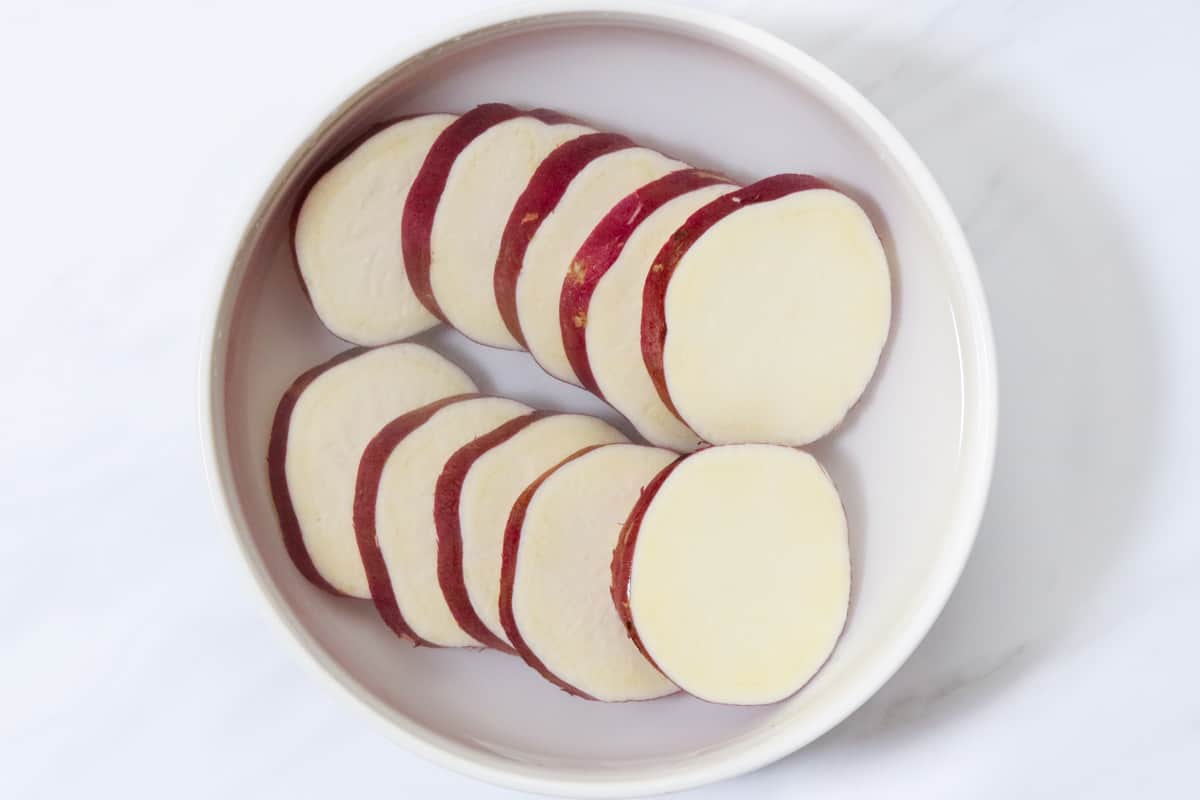
Step 1
Trim both ends of the sweet potato, then slice it into ⅖-inch (1 cm) thick rounds. Soak the slices in water (not listed in the ingredients) for about 5 minutes to remove any astringency.

Step 2
Slice the lemon into thin rounds.
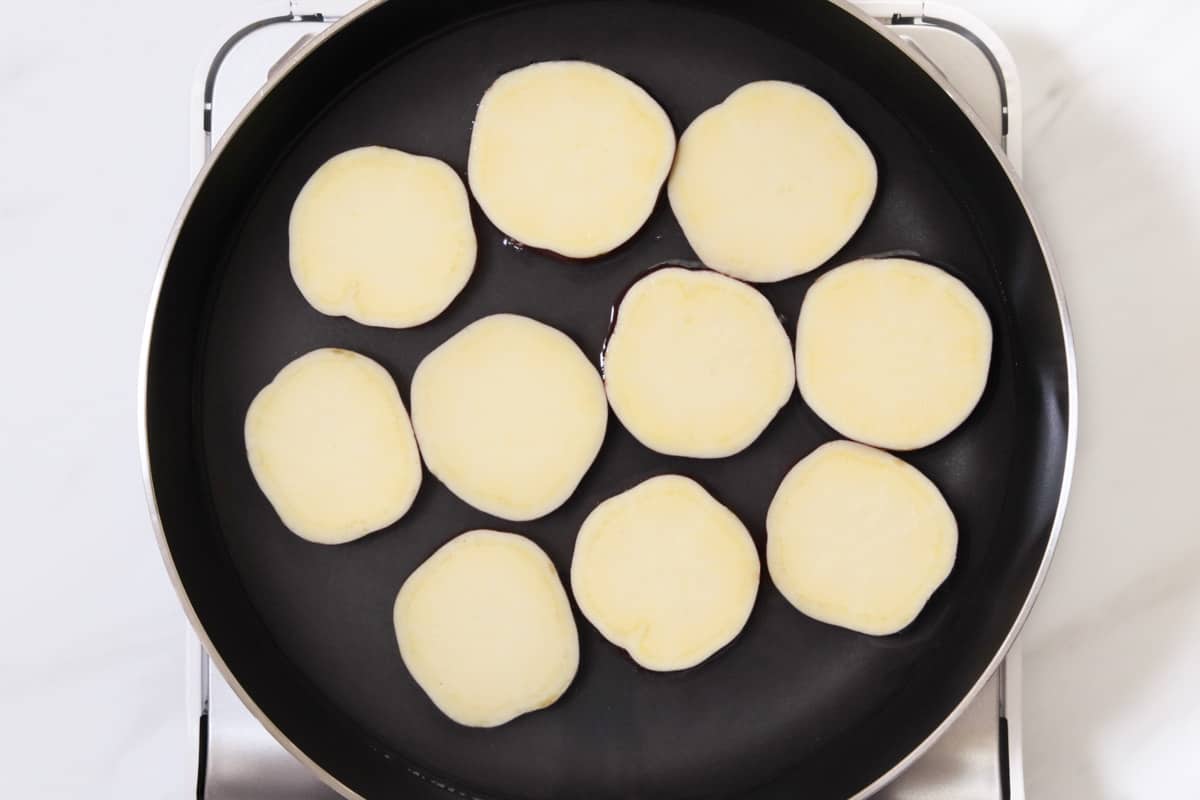
Step 3
Place the sweet potato slices in a pan or pot, arranging them so they overlap as little as possible. Then, add water (as specified in the recipe) and bring it to a boil. Once boiling, add sugar, cover with an otoshi-buta, and let it simmer over medium-low heat for 15 minutes.
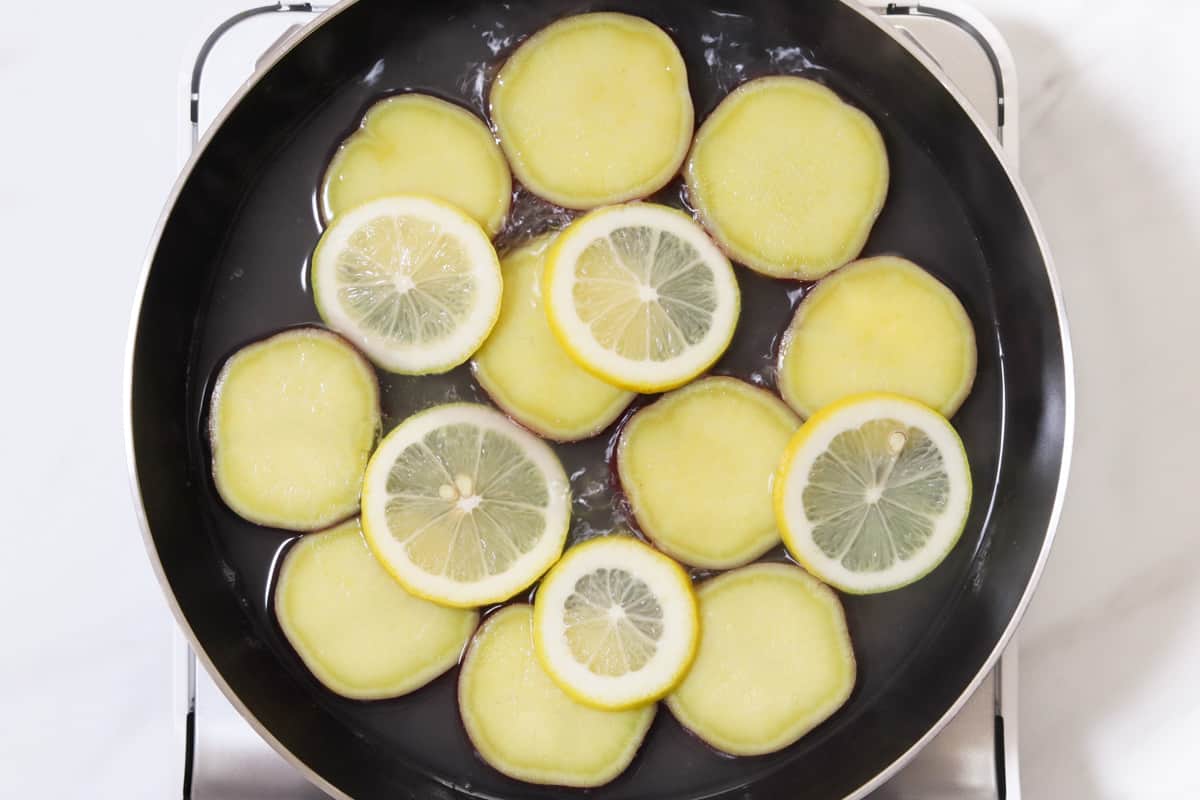
Step 4
Remove the otoshi-buta, add the lemon slices, and continue simmering for a few more minutes. Turn off the heat and let the flavors meld for at least 20 minutes.
To store
You can store it in the refrigerator for up to 4 days.
Cooking tips
Add the lemon slices at the final step. This will preserve their tartness and aroma, which can be easily lost during heating.
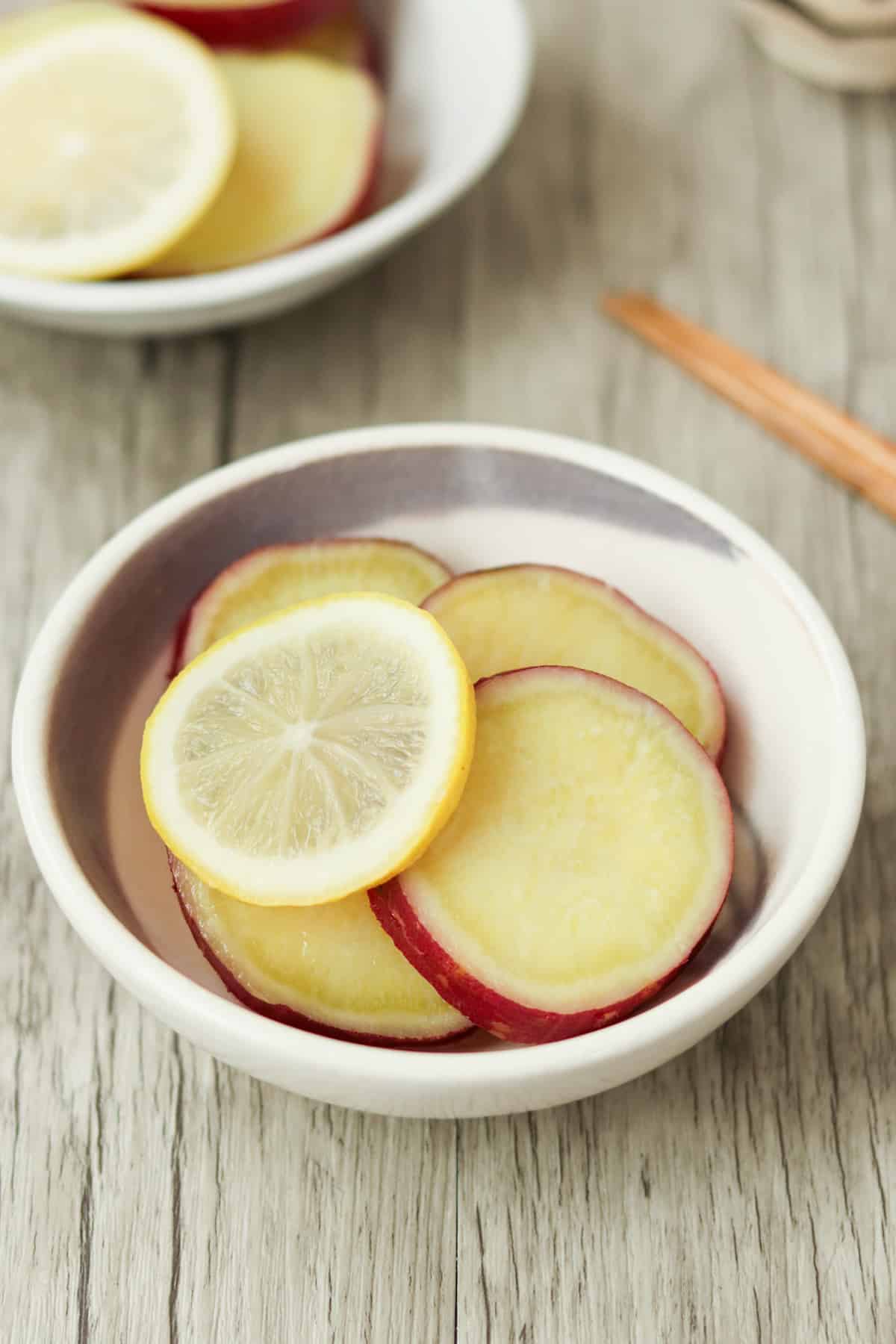
If you try this recipe, I’d love to hear what you think. Please consider leaving a review and star rating in the comments below. If you enjoyed it, I’d really appreciate it if you shared it with your friends.
More Japanese sweet potato recipes you'll love
Recipe card

Satsumaimo no Lemon-ni (Sweet Potatoes Simmered with Lemon)
Equipment
- otoshi-buta (drop-lid) (You can easily make one by following the instructions above. If that seems like too much trouble, you can simply use a regular lid instead.)
Ingredients
- 1 Japanese sweet potato (satsumaimo)
- ½ lemon
- 1 cup water
- 2 Tbsp sugar
Instructions
- Trim both ends of the sweet potato, then slice it into ⅖-inch (1 cm) thick rounds. Soak the slices in water (not listed in the ingredients) for about 5 minutes to remove any astringency.
- Slice the lemon into thin rounds.
- Place the sweet potato slices in a pan or pot, arranging them so they overlap as little as possible. Then, add water (as specified in the recipe) and bring it to a boil. Once boiling, add sugar, cover with an otoshi-buta, and let it simmer over medium-low heat for 15 minutes.
- Remove the otoshi-buta, add the lemon slices, and continue simmering for a few more minutes. Turn off the heat and let the flavors meld for at least 20 minutes.
Notes
- You can store it in the refrigerator for up to 4 days.






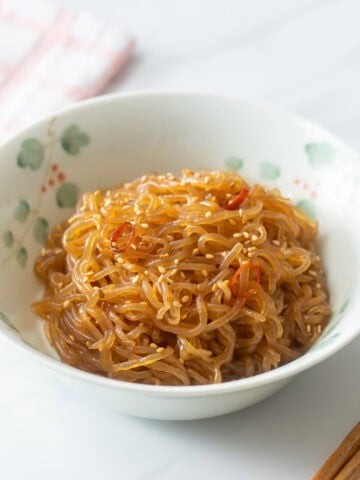
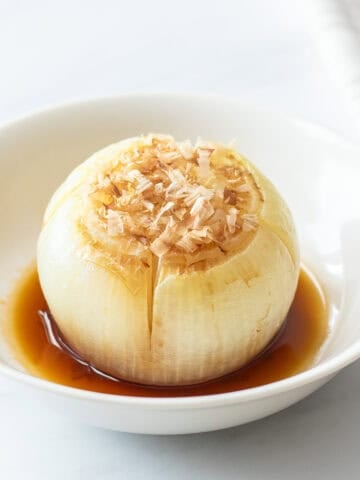
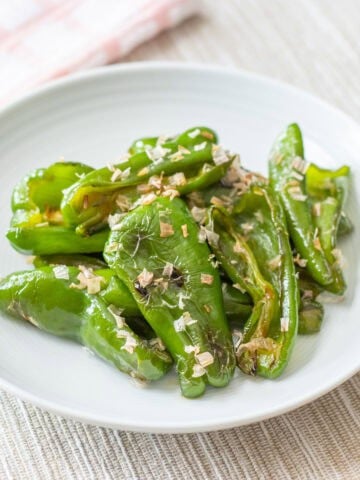
Leave a Rating and a Comment